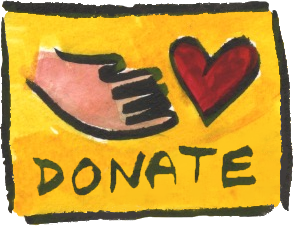One Bell Hand / Two Bell Hands…and Feet (31m + 29m, Patrons)
Named after the shape the hand makes, this pair of half-hour lessons is designed to be completed together the first time through. Reset your nervous system and learn to relate the activity and skillfulness of your hands with your whole self.
- Lesson 1 - Side-lying, balancing a forearm and lower leg in relationship with bell hand movements.
- Lesson 2 (starts at 31:30) - Back-lying, sensing the relationship of the orientation of head and eyes with the activity of the hands, and relating the hands with the feet.
We offer over 50 free lessons, but this one's just for our Patron-level donors. You can learn about it in the free lesson notes and comments below, but to access the audio you’ll need to join The FP as a Patron. Learn more
Donor Tip: Skip this login next time! See Why & How to Stay Logged In (and why it's safe)
Got a question for Nick, or a thought about this lesson?
Use the comments section below! Public comments build our community and help search engines find us.





Wow, what an interesting and profound lesson. (How have i never done a “bell hand” lesson in so many years of Feldenkrais?) I discovered my JAW wants to open and close when i open and close my hand! Had to do the movements minutely small to uncouple this not-very-useful habit!
Perhaps not very useful, but actually that’s a very natural linkage. It’s great that you noticed it, and found a way to introduce choice about it. If you’re interested, “go fishing” for this in your regular life: when your hands are clenching, can you sense it in your jaw? Can you choose to differentiate them more?
Thanks so much, Nick. Can’t wait to explore more! Particularly when i’m riding my horse. My hands have to softly and sensitively hold the reins, yet be “firm” enough to keep a steady “contact”, as i follow all my horse’s movement in her neck, back and ribs.
Hi Nick, finally got to try the bell hands ones One bell hand, two bell hands and feet. Very strange and interesting lesson for sure. After part one my right side felt longer and like I was taking up more space …my left side felt wizened and crowded in on myself by comparison. Does that make any sense lol. I got very lost at times in the second half, which always causes me to try harder, particularly with the feet…sort of tensing my lower leg. It’s one I’ll do again though, as it was sort of soothing.
Yup, that strong sensory difference between the two sides makes perfect sense! Most folks end up there, at least on early explorations of really one-sided versions of bell hands like the first half of this lesson. Definitely do this lesson again sometime – I think it will become even more soothing and useful to you when you find yourself able to let go of trying hard. Try the tips in the Curiosities tab.
Oh and I forgot to ask, I do most lessons with a folded up thick beach towel under my head . Is that ok, not ideal I suppose but my head and front of neck strain otherwise.
Comfort first, always. The only pitfall with knowing what you need for comfort is never gently testing if it’s still appropriate to your current experience. For example, lots of folks who value a lot of head support at the beginning of the lesson find that later on in the lesson they enjoy fewer folds of their towel. Or if you do a second lesson on the same day, or a day after, you may find you need less. It’s helpful to be curious about everything, even sometimes re-examining our preferences and assumptions about comfort.
Ahh yes that good advice, to test as you go along, to see if can reduce the height of head support.
Hello Nick and others. Do you think this lesson would be helpful as a means to learn how to use my hands in a way that causes less overuse and muscle stress/fatigue? I use my hands a lot for my work and hobbies (gardening, cooking, music), and at age 55 I’m starting to feel stiffness and achiness in my fingers on a pretty regular basis. If there are lessons that focus on the arms and forearms, this might be another useful angle.
Thanks so much!
-Karen
Yes, I believe it would be helpful for that, along with our other two bell hand lessons. Most folks have accumulated habits of using their hands in many activities with more force and strength than is necessary. There’s also often a tendency to splay the thumb unnecessarily widely away from the fingers. These lessons can reduce strain and help you begin to learn to use your hands in a softer, gentler way. They’ll still be strong when you need them to be, but more flowing and graceful and at ease when strength isn’t needed.
Wonderful, thank you, I’ll give them a try!
So, so lovely. I had planned to practice Pilates or walk on the treadmill after doing this video but I can’t possibly disrupt the incredible sense of calm this lesson gave me. Thank you for your always excellent and clear guidance and positive spirit.
I’m so thankful for this lesson – just what I need right now, so peaceful.
As I’m so exhausted today I had to make this tiny movements with my hands resting on my torso – sensing my fingers so beautifully.
So lovely – after 10 I was asleep – handn’t heard anything from the 1st part this time it was 6 p.m. and I wanted to do the whole lesson – no chance.
The only thing I realized that now I really get the movement and it must mean belle – because it feels so beautiful.